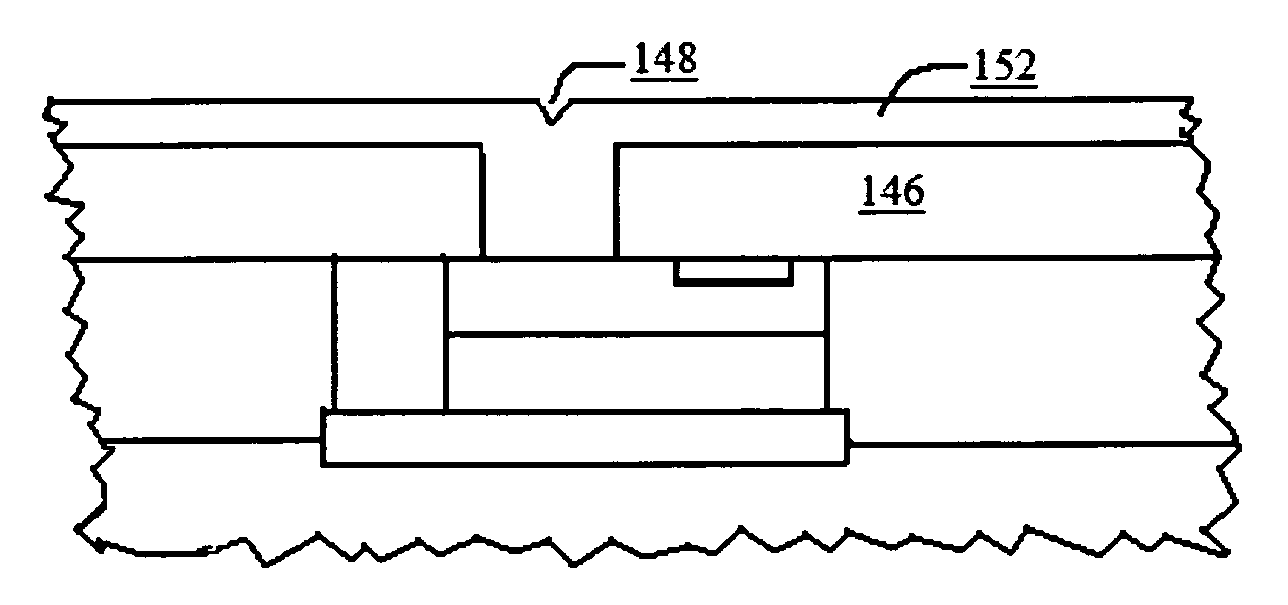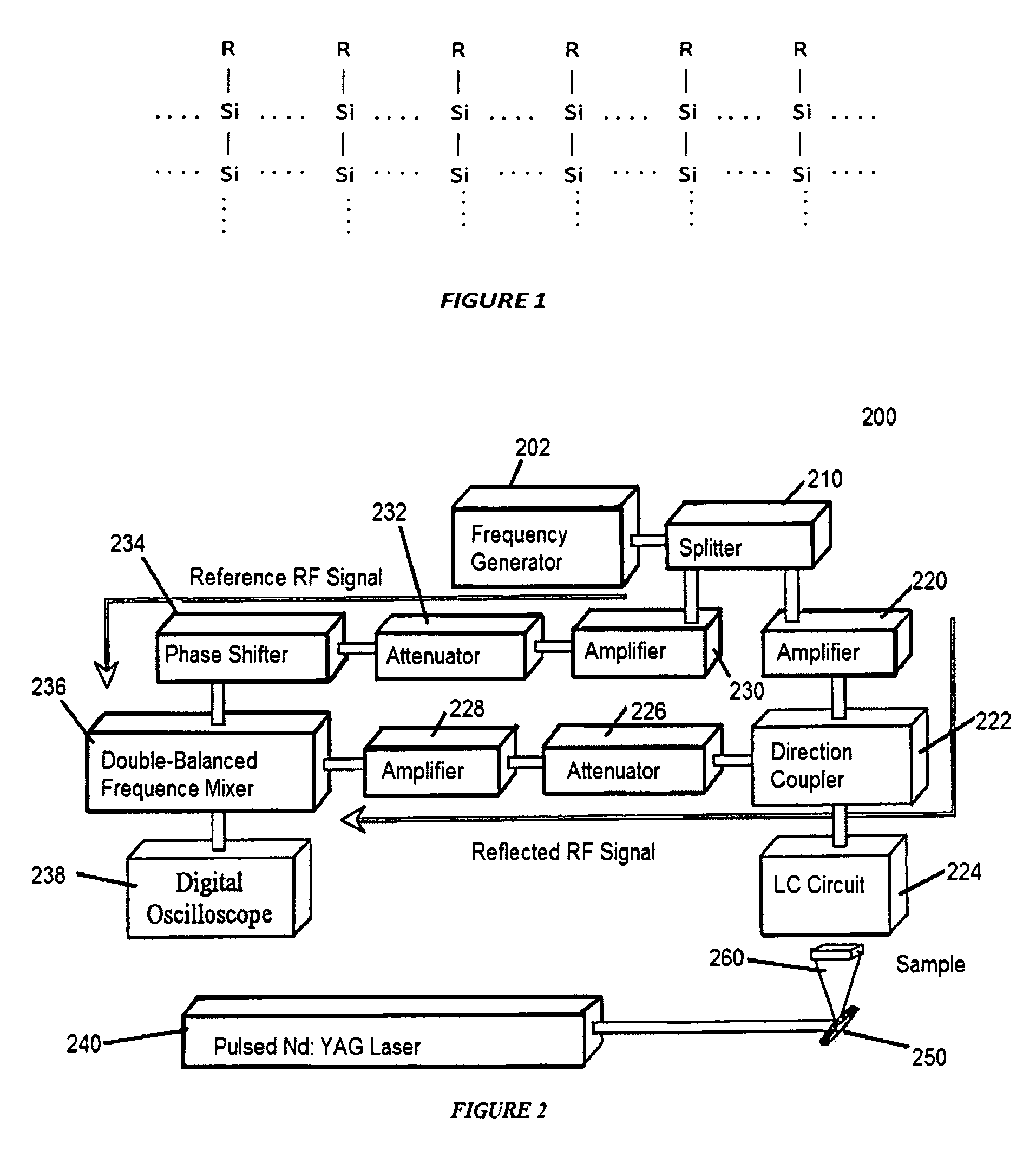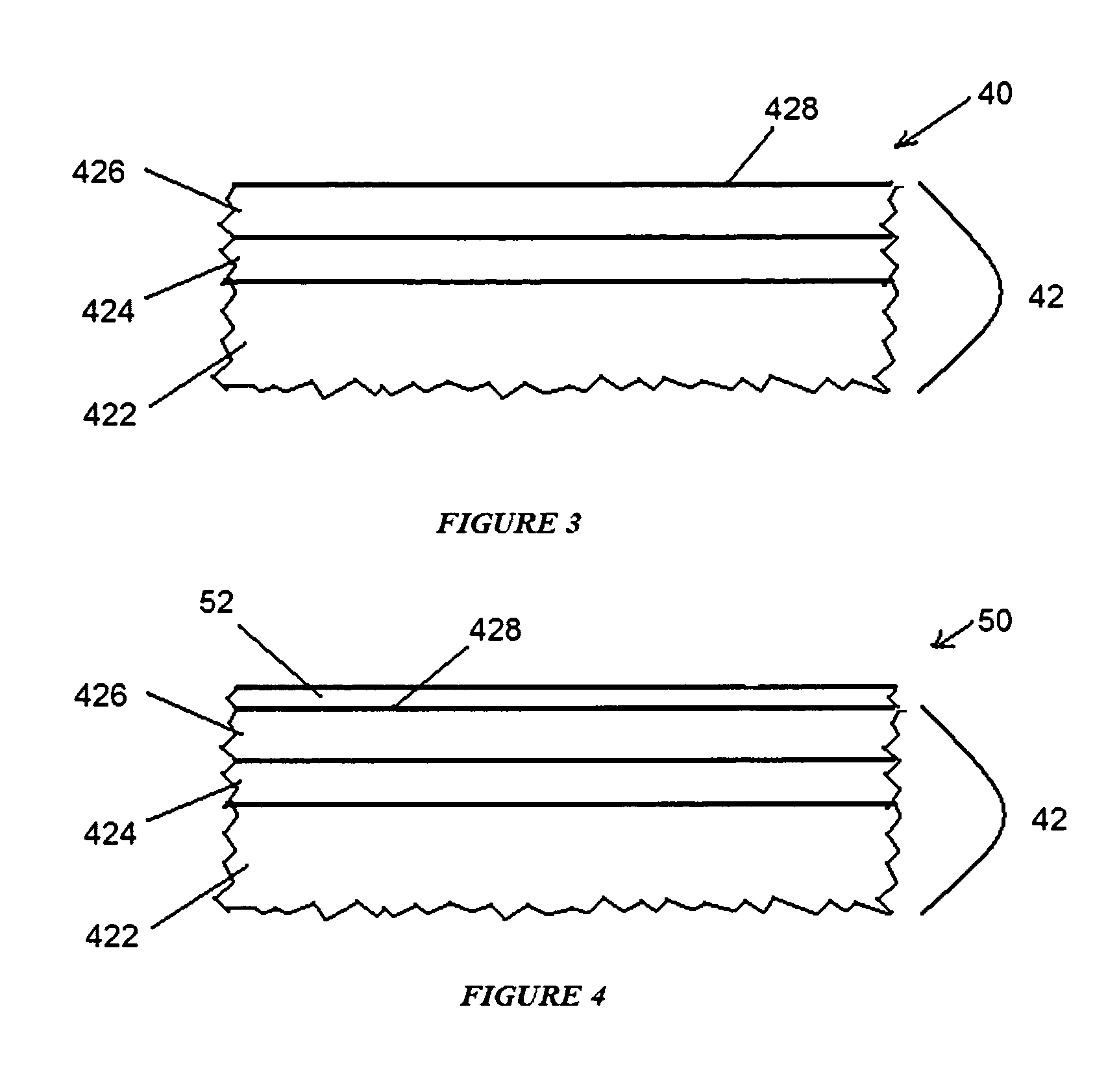Electrical passivation of silicon-containing surfaces using organic layers
a technology of organic layers and silicon-containing surfaces, applied in the direction of thermoelectric devices, basic electric elements, solid-state devices, etc., can solve the problems of surface states that form electrical defects, poor electrical properties of such surfaces, and site of electrical defects of crystalline solids, so as to improve the electrical properties of electrical devices, improve the electrical properties of silicon-based electronic materials, and reduce the effect of dangling bonds
- Summary
- Abstract
- Description
- Claims
- Application Information
AI Technical Summary
Benefits of technology
Problems solved by technology
Method used
Image
Examples
Embodiment Construction
[0030]Reference is now made in detail to the exemplary embodiments of the invention, examples of which are illustrated in the accompanying drawings. Wherever possible, the same reference numbers will be used throughout the drawings to refer to the same or like parts (elements).
[0031]Electrical structures and devices may be formed and include an organic passivating layer that is chemically bonded to silicon to improve the electrical properties of electrical devices. In different embodiments, the organic passivating layer may remain within finished devices to reduce dangling bonds, improve carrier lifetimes, decrease surface recombination velocities, increase capacitance, or provide improvements in other electronic properties, such as voltage. In other embodiments, the organic passivating layer may be used as a protective sacrificial layer and reduce the contact resistance or reduce the resistance of doped regions.
[0032]Attention is now directed to specific embodiments. The semiconduc...
PUM
 Login to View More
Login to View More Abstract
Description
Claims
Application Information
 Login to View More
Login to View More - R&D
- Intellectual Property
- Life Sciences
- Materials
- Tech Scout
- Unparalleled Data Quality
- Higher Quality Content
- 60% Fewer Hallucinations
Browse by: Latest US Patents, China's latest patents, Technical Efficacy Thesaurus, Application Domain, Technology Topic, Popular Technical Reports.
© 2025 PatSnap. All rights reserved.Legal|Privacy policy|Modern Slavery Act Transparency Statement|Sitemap|About US| Contact US: help@patsnap.com



